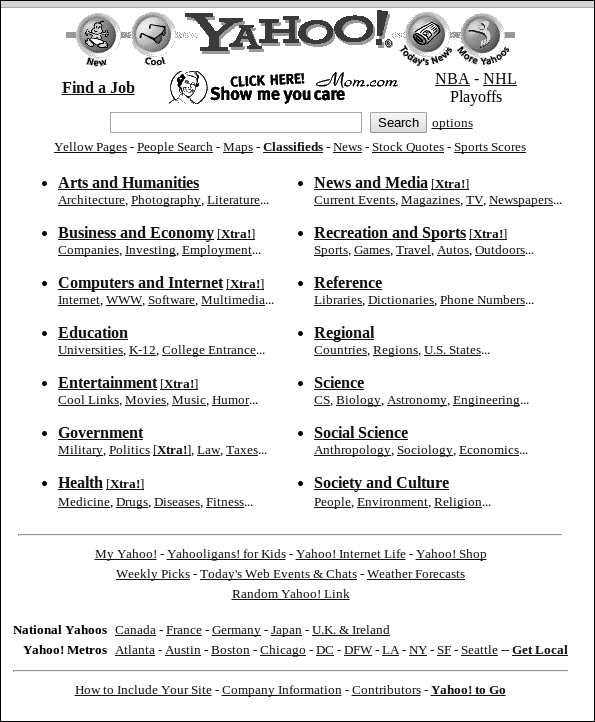In many ways, the history of web development can be seen as a progression from server-based logic to client-based logic. The story begins in 1993, with the introduction of the world's first real web browser: Mosaic. At that time, the Web didn't even have JavaScript (or CSS, for that matter), just HTML. In those early days, most sites were simple static sites, and any site with dynamic elements had to be entirely server based. The very first version of JavaScript would only be introduced two years later at the end of 1995, and it would take several more years before the language was useful for anything other than simple form validation.

Yahoo!'s JavaScript-less website in 1997
Luckily, the Web did evolve, and soon JavaScript developers witnessed the birth of a whole new wave of JavaScript libraries, such as Dojo, MochiKit, YUI, and, of course, jQuery. These libraries allowed developers to easily manipulate the DOM, avoid the rampant cross-browser issues of the time, and take advantage of a newly introduced technology known as AJAX. In other words, they enabled developers to create a new type of site, the JavaScript-assisted but still largely server-based web application.
Even with these advances, the server still maintained control over two critical pieces of a site's infrastructure: navigation and page rendering. This problem wouldn't be solved until years later, with the introduction of the modern generation of JavaScript frameworks, the first and popular one being Backbone. Using Backbone, web developers were finally able to control an entire site using only the client-side technologies of JavaScript, HTML, and CSS, which meant that they could create an entirely new type of web application, the thick client or single page site.
Today, even with the advent of Backbone and related libraries, many developers still continue to create the three previous types of site, which is perfectly reasonable as long as their goals are modest. In other words, if you simply want to show off your wedding photos to friends, then you probably don't need the full power of Backbone. However, if your goal is to build a powerful and robust web application, then the advantages of a Backbone-powered site are clear.



